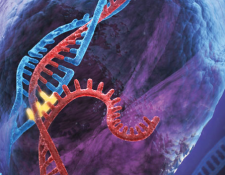Why the Nobel Prize shows the US and China need to work together on gene editing
By Mahlet N. Mesfin and Scott Moore,
The Hill
| 10. 18. 2020
Last week, two women — Jennifer Doudna and Emmanuelle Charpentier — were awarded the Nobel Prize for their groundbreaking discovery of an enzyme system (CRISPR-Cas9) that can edit an organism’s genetic code with extreme precision. As the Nobel committee recognized, this discovery has had a revolutionary impact on the life sciences. There are arguably fewer discoveries in recent years that have been met with as much excitement about the possibilities — from treating cancer patients to developing new crops to rapidly developing diagnostic tools in pandemics such as COVID-19 — coupled with as much concern of its use and application.
In 2016, then-U.S. Director of National Intelligence James Clapper warned Congress that “Research in genome editing conducted by countries with different regulatory or ethical standards than those of western countries probably increases the risk of the creation of potentially harmful biological agents or products.” Two years later, a Chinese scientist named He Jiankui demonstrated the foreshadowing of those words when he gained international notoriety for using CRISPR-Cas9 technology to edit two human embryos' genomes to prevent transmission of HIV. Not...
Related Articles
By Aisha Down, The Guardian | 11.10.2025
It has been an excellent year for neurotech, if you ignore the people funding it. In August, a tiny brain implant successfully decoded the inner speech of paralysis patients. In October, an eye implant restored sight to patients who had...
By Jessica Hamzelou, MIT Technology Review | 11.07.2025
This week, we heard that Tom Brady had his dog cloned. The former quarterback revealed that his Junie is actually a clone of Lua, a pit bull mix that died in 2023.
Brady’s announcement follows those of celebrities like Paris...
By Heidi Ledford, Nature | 10.31.2025
Late last year, dozens of researchers spanning thousands of miles banded together in a race to save one baby boy’s life. The result was a world first: a cutting-edge gene-editing therapy fashioned for a single person, and produced in...
By Lauran Neergaard, AP News | 11.03.2025
WASHINGTON (AP) — The first clinical trial is getting underway to see if transplanting pig kidneys into people might really save lives.
United Therapeutics, a producer of gene-edited pig kidneys, announced Monday that the study’s initial transplant was performed successfully...




